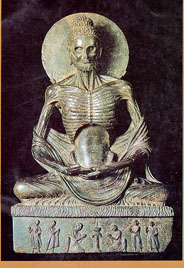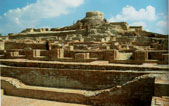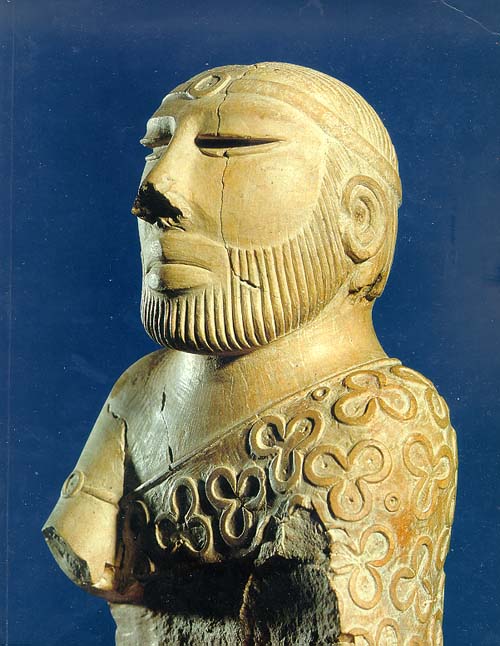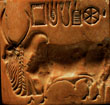 Ancient Laos Civilization in the Middle Mekong Valley
Ancient Laos Civilization in the Middle Mekong ValleyA number of princely fiefdoms based on wet rice cultivation and associated with the pottery and bronze culture of Ban Chiang developed in the middle Mekong Valley from the first century A.D. These fiefdoms exercised power over their neighbors, in circumstances of generally sparse populations, through expanding and contracting spheres of influence best described by the term mandala. Commerce, marriage contracts, and warfare served to expand a mandala.
Thus, a plurality of power centers occupied the middle Mekong Valley in early times. Sikhôttabong was a mandala whose capital was located on the left bank of the Mekong at the mouth of the Xé Bangfai and then moved westward as a result of the expansion of Champa, an Indianized state on the coast of Vietnam founded in 192 A.D. Cham, descendants of Champa, were present at Champasak (Bassac) in the fifth century. The Mon kingdom of Candapuri, the earliest name of present-day Vientiane, (Viangchan) was another mandala. The social structure of Sikhôttabong and Candapuri appears to have been strongly hierarchical, with an aristocracy, a commoner class, and a slave class. The fact that some kings came from the commoner class appears to indicate the presence of some sort of consensus in effecting royal succession. At its peak, another important regional power, Funan, had its mandala incorporate parts of central Laos. The smaller but also important Mon kingdom of Dvaravati (through which Theravada Buddhism--see Glossary--reached Laos in the seventh and eighth centuries) was centered in the lower Menam Valley beginning in the fifth century.
In the seventh century, a northwesterly migration of Thais from their region of origin in northwestern Tonkin brought to the Ta-li region in what is present-day Yunnan, China, a successor state to the Ai Lao kingdom. This new kingdom, Nan-chao, expanded its power by controlling major trading routes, notably the southern Silk Road. Culturally, this polyethnic, hierarchical, and militarized state was to have a great influence on later societies in Indochina, transmitting the Tantric Buddhism of Bengal to Laos, Thailand, and the Shan state, and possibly Cambodia, and the political ideology of the maharaja (protector of Buddhism). Nan-chao was organized administratively into ten prefectures called kien. This term seems to be the origin of place-names keng (for example, Kengtung), chiang (for example, Chiang Mai), and xiang (for example, Xiangkhoang). Moreover, the population and army of Nan-chao were organized in units of 100, 1,000, and 10,000, a form later found in Indochina. Also, the title chao (prince), appears to have been of Nan-chao origin. Another branch of this same migration began at the headwaters of the Nam Ou and followed it downstream to Louangphrabang and continued on through Xaignabouri to Chiang Mai.
As a result of the expansion and contraction of mandala, places of importance were known by more than one name. Muang Sua was the name of Louangphrabang following its conquest in 698 A.D. by a Thai prince, Khun Lo, who seized his opportunity when Nan-chao was engaged elsewhere. Khun Lo had been awarded the town by his father, Khun Borom, who is associated with the Lao legend of the creation of the world, which the Lao share with the Shan and other peoples of the region. Khun Lo established a dynasty whose fifteen rulers reigned over an independent Muang Sua for the better part of a century.
In the second half of the eighth century, Nan-chao intervened frequently in the affairs of the principalities of the middle Mekong Valley, resulting in the occupation of Muang Sua in 709. Nan-chao princes or administrators replaced the aristocracy of Thai overlords. Dates of the occupation are not known, but it probably ended well before the northward expansion of the Khmer Empire under Indravarman I (r. 877-89) and extended as far as the territories of Sipsong Panna on the upper Mekong.
In the meantime, the Khmers founded an outpost at Xay Fong near Vientiane, and Champa expanded again in southern Laos, maintaining its presence on the banks of the Mekong until 1070. Canthaphanit, the local ruler of Xay Fong, moved north to Muang Sua and was accepted peacefully as ruler after the departure of the Nan-chao administrators. Canthaphanit and his son had long reigns, during which the town became known by the Thai name Xieng Dong Xieng Thong. The dynasty eventually became involved in the squabbles of a number of principalities. Khun Cuang, a warlike ruler who may have been a Kammu (alternate spellings include Khamu and Khmu) tribesman, extended his territory as a result of the warring of these principalities and probably ruled from 1128 to 1169. Under Khun Cuang, a single family ruled over a far-flung territory and reinstituted the Siamese administrative system of the seventh century. Muang Sua next became the Kingdom of Sri Sattanak, a name connected with the legend of the naga (mythical snake or water dragon) who was said to have dug the Mekong riverbed. At this time, Theravada Buddhism was subsumed by Mahayana Buddhism.
Muang Sua experienced a brief period of Khmer suzerainty under Jayavarman VII from 1185 to 1191. By 1180 the Sipsong Panna had regained their independence from the Khmers, however, and in 1238 an internal uprising in the Khmer outpost of Sukhodaya expelled the Khmer overlords.
We offer the Internet's largest selection of Asian Arts, Crafts, and Collectibles with over 5,000 different items in stock in our Maryland warehouse. Our products are handcrafted and imported from Japan, China, Korea, Bali, India, Vietnam, Russia, Ceylon, Nepal, and Thailand. So sit back, relax, and enjoy your visit.








Join The Community